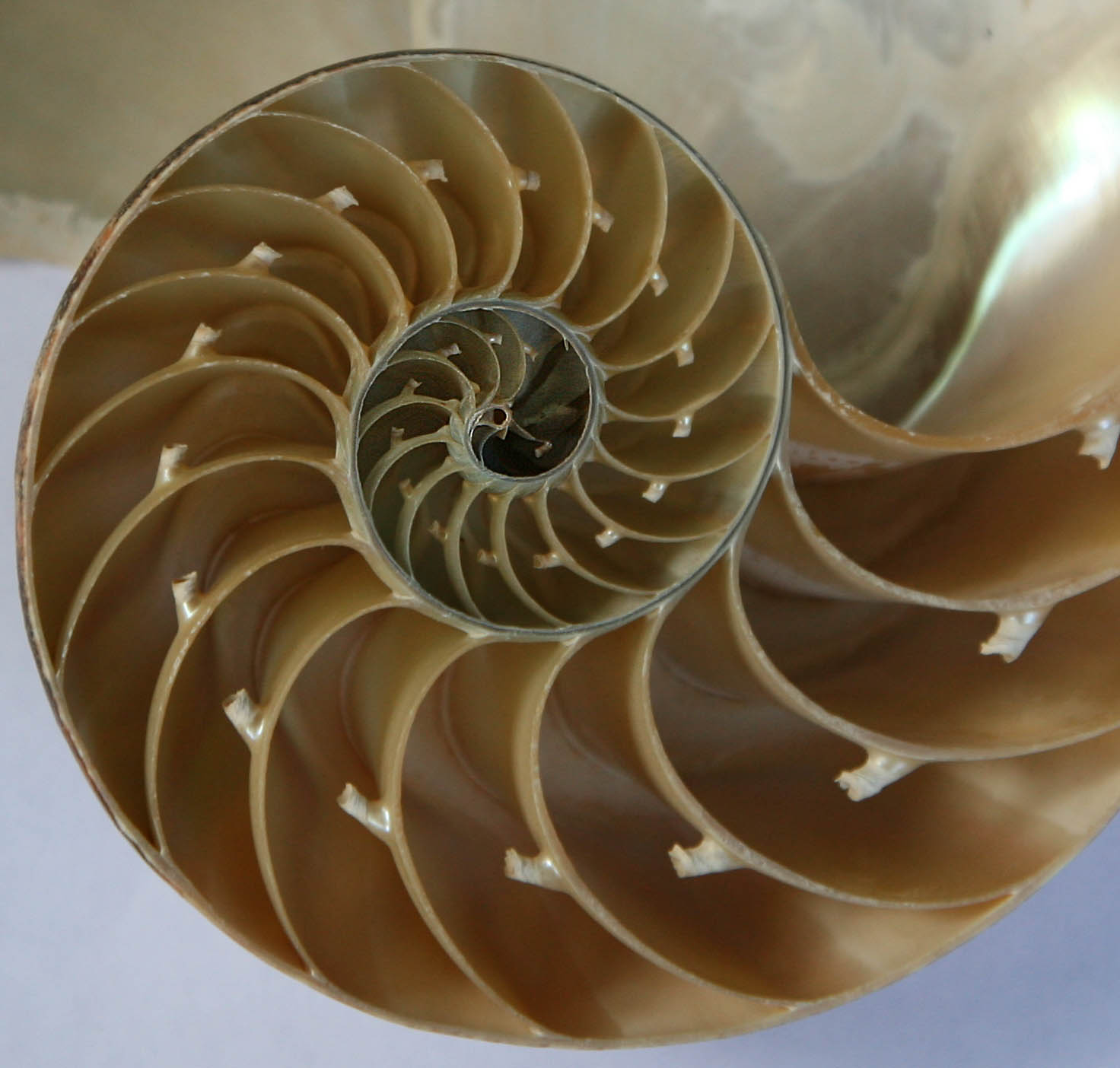
The Oracle’s Library reveals the harmony of the world. Throughout history, many great minds have sought to find the connection between the underlying symmetry of reality and geometric patterns in nature. This definition of divine proportion takes us back to what is known as the golden ratio—aka the golden section. The golden ratio is a geometric proportion that reflects the limit phi—about 1.618. This number is the root of efficient creation in nature expressed in the spiral of a seashell, the arrangement sunflower seeds and even the symmetry of the human body.
Sacred Geometry in Nature
 In the third dimension, the fundamental geometry behind the material world can be traced back to the Platonic Solids. Plato defined these five shapes—the tetrahedron, the cube or hexahedron, the octahedron, the dodecahedron, and the icosahedron—as a blueprint of nature in its most basic form. When we look inside the human body, we find that carbon prefers to bond in tetrahedron shapes. The tetrahedron creates one of the most balanced and stable geometric forms in reality. In the same way, the remaining Platonic solids can be found in minerals, crystals and within the make-up of living creatures. The icosahedron remains the most complex solid of the bunch and can be identified as the shape of many viruses. In astrology, the two dimensional sides of each Platonic Solid can also be traced in the sky by measuring the angles between the celestial bodies with astrological aspects.
In the third dimension, the fundamental geometry behind the material world can be traced back to the Platonic Solids. Plato defined these five shapes—the tetrahedron, the cube or hexahedron, the octahedron, the dodecahedron, and the icosahedron—as a blueprint of nature in its most basic form. When we look inside the human body, we find that carbon prefers to bond in tetrahedron shapes. The tetrahedron creates one of the most balanced and stable geometric forms in reality. In the same way, the remaining Platonic solids can be found in minerals, crystals and within the make-up of living creatures. The icosahedron remains the most complex solid of the bunch and can be identified as the shape of many viruses. In astrology, the two dimensional sides of each Platonic Solid can also be traced in the sky by measuring the angles between the celestial bodies with astrological aspects.
The Golden Ratio and Aesthetics
 The golden ratio is a powerful number that defines our own recognition of beauty with the aesthetic arrangement of geometric symmetry in art, architecture and even music. During the Renaissance the golden ratio was rediscovered by master artists like Leonardo da Vinci who used it to construct the ideal human form known as the Vitruvian Man. Da Vinci and many other artists also took advantage of this divine proportion by fitting ‘golden rectangles’ in the arrangement of paintings and sculpture. The subtle recognition of this the golden ratio is perhaps the reason why such Renaissance art pieces are still highly celebrated today. When we recognize beauty in people, it is an illusion of this symmetrical proportion reflected in the human face.
The golden ratio is a powerful number that defines our own recognition of beauty with the aesthetic arrangement of geometric symmetry in art, architecture and even music. During the Renaissance the golden ratio was rediscovered by master artists like Leonardo da Vinci who used it to construct the ideal human form known as the Vitruvian Man. Da Vinci and many other artists also took advantage of this divine proportion by fitting ‘golden rectangles’ in the arrangement of paintings and sculpture. The subtle recognition of this the golden ratio is perhaps the reason why such Renaissance art pieces are still highly celebrated today. When we recognize beauty in people, it is an illusion of this symmetrical proportion reflected in the human face.
The Fibonacci Sequence and Phi
The golden ratio is an ancient concept that can be found in many of the most famous constructions of the past. The Parthenon as well as the Pyramids of Giza were built with the proportion of the golden ratio in mind. Many besides the architects who designed the Parthenon knew of the implications of the golden ratio. Musical harmony was also defined in the ancient Greek world using a pattern of numbers similar to the golden ratio now known as the Fibonacci Sequence—1, 1, 2, 3, 5, 8, 13. Each number added brings us closer to the limit phi. These patterns reflect the natural harmonic ratio between the music of the world and helped to form the musical scale—octave and the shape of musical instruments. Explore the implications of sacred geometry in astrology with How to Read a Natal Chart.
Thank you for reading at the Oracle’s Library! Please comment and share your thoughts on the golden ratio.
⚕Home⚕
photo credit: jitze via photopin cc
photo credit: Joaquín Martínez Rosado via photopin cc




